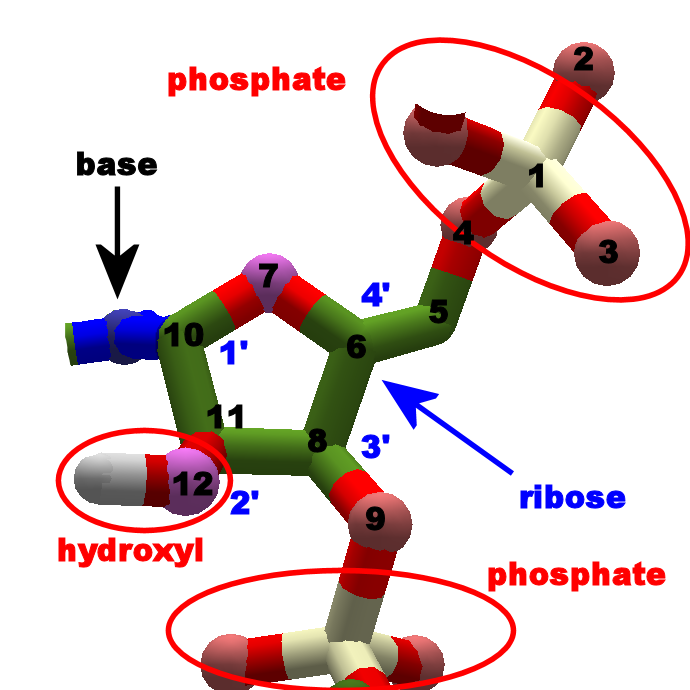

Chargaff drew no conclusions from his work, but others soon did.Īt Cambridge University in 1953, James D. Similarly, he showed that the molar amount of guanine (G) was the same as that of cytosine (C). In 1950, Erwin Chargaff of Columbia University showed that the molar amount of adenine (A) in DNA was always equal to that of thymine (T). Initial work revealed that the polymer had a regular repeating structure. The three-dimensional structure of DNA was the subject of an intensive research effort in the late 1940s to early 1950s. The sequence of nucleotides in the DNA segment shown in Figure 10.5 "Structure of a Segment of DNA" would be written 5′-dG-dT-dA-dC-3′, which is often further abbreviated to dGTAC or just GTAC.
#Protein backbone ends free
The final nucleotide has a free OH group on the 3′ carbon atom and is called the 3′ end. For DNA, a lowercase d is often written in front of the sequence to indicate that the monomers are deoxyribonucleotides. In writing nucleotide sequences for nucleic acids, the convention is to write the nucleotides (usually using the one-letter abbreviations for the bases, shown in Figure 10.5 "Structure of a Segment of DNA") starting with the nucleotide having a free phosphate group, which is known as the 5′ end, and indicate the nucleotides in order. For amino acid sequences in proteins, the convention is to write the amino acids in order starting with the N-terminal amino acid. Unlike proteins, which have 20 different kinds of amino acids, there are only 4 different kinds of nucleotides in nucleic acids. Like proteins, nucleic acids have a primary structure that is defined as the sequence of their nucleotides. We begin by looking at the small molecules needed to form DNA and RNA (ribonucleic acid)-the nucleotides.įigure 10.5 Structure of a Segment of DNAĪ similar segment of RNA would have OH groups on each C2′, and uracil would replace thymine. If genes are segments of DNA, we need to learn more about the structure and physiological function of DNA.
#Protein backbone ends code
But what really are genes and how is the information they contain expressed? One definition of a gene is that it is a segment of DNA that constitutes the code for a specific polypeptide. A new individual receives half its hereditary material from each parent.Ĭalling the unit of heredity a “gene” merely gives it a name. Thus, in sexual reproduction, the entire complement of chromosomes is achieved only when an egg and sperm combine. Sperm and egg cells contain only a single copy of each chromosome that is, they contain only one member of each chromosome pair. Human body cells have 23 pairs of chromosomes having 20,000–40,000 different genes. The number of chromosomes (and genes) varies with each species. These complex structures, consisting of DNA and proteins, contain the basic units of heredity, called genes. What accounts for this specificity at all levels of reproduction? How does a fertilized egg “know” that it should develop into a kangaroo and not a koala? What makes stomach cells produce gastric acid, whereas pancreatic cells produce insulin? The blueprint for the reproduction and the maintenance of each organism is found in the nuclei of its cells, concentrated in elongated, threadlike structures called chromosomes. Furthermore, within each multicellular organism, every tissue is composed of cells specific to that tissue. From viruses to humans, each species reproduces after its own kind. Foxes have kits that grow up to be foxes. Dogs have puppies that grow up to be dogs.


 0 kommentar(er)
0 kommentar(er)
